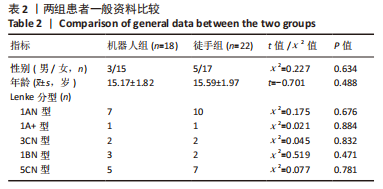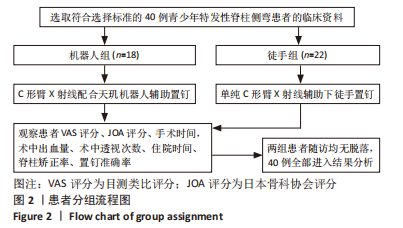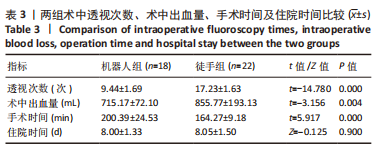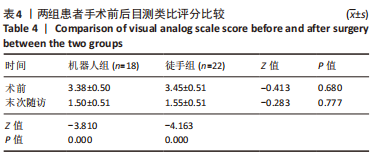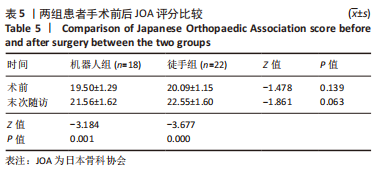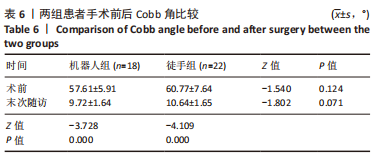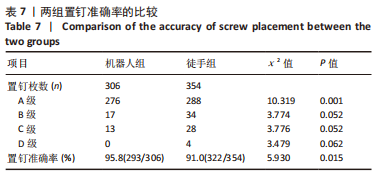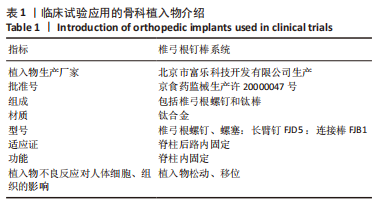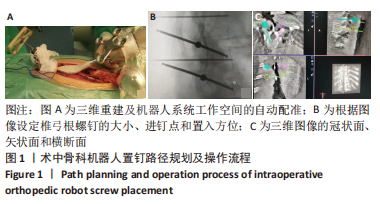[1] QIU GX. Scoliosis in China: History and Present Status. Chin Med J (Engl). 2017; 130(21):2521-2523.
[2] 许建中.特发性脊柱侧弯诊治的历史与未来[J].第三军医大学学报,2019, 41(19):1855-1858.
[3] KOMANG-AGUNG IS, DWI-PURNOMO SB, SUSILOWATI A. Prevalence Rate of Adolescent Idiopathic Scoliosis: Results of School-based Screening in Surabaya, Indonesia. Malays Orthop J. 2017;11(3):17-22.
[4] LI Z, LI G, CHEN C, et al. The radiographic parameter risk factors of rapid curve progression in Lenke 5 and 6 adolescent idiopathic scoliosis: A retrospective study. Medicine (Baltimore). 2017;96(52):e9425.
[5] PENG Y, WANG SR, QIU GX, et al. Research progress on the etiology and pathogenesis of adolescent idiopathic scoliosis. Chin Med J (Engl). 2020;133(4): 483-493.
[6] 李佳佳,刘彬,周纪平.青少年特发性脊柱侧弯的手术治疗[J].创伤与急诊电子杂志,2016,4(2):117-120,100.
[7] KUZNIA AL, HERNANDEZ AK, LEE LU. Adolescent Idiopathic Scoliosis: Common Questions and Answers. Am Fam Physician. 2020;101(1):19-23.
[8] NEGRINI S, DONZELLI S, AULISA AG, et al. 2016 SOSORT guidelines: orthopaedic and rehabilitation treatment of idiopathic scoliosis during growth. Scoliosis Spinal Disord. 2018;13:3.
[9] CHEUNG ZB, SELVERIAN S, CHO BH, et al. Idiopathic Scoliosis in Children and Adolescents: Emerging Techniques in Surgical Treatment. World Neurosurg. 2019; 130:e737-e742.
[10] 李洪珂,郝申申,王鹏程,等.3D打印导航模板辅助特发性脊柱侧弯椎弓根螺钉置入的准确性[J].中国组织工程研究,2020,24(30):4757-4762.
[11] SATO T, YONEZAWA I, AKIMOTO T, et al. Novel Hump Measurement System With a 3D Camera for Early Diagnosis of Patients With Adolescent Idiopathic Scoliosis: A Study of Accuracy and Reliability. Cureus. 2020;12(5):e8229.
[12] GAO S, LV Z, FANG H. Robot-assisted and conventional freehand pedicle screw placement: a systematic review and meta-analysis of randomized controlled trials. Eur Spine J. 2018;27(4):921-930.
[13] SOLOMIICHUK V, FLEISCHHAMMER J, MOLLIQAJ G, et al. Robotic versus fluoroscopy-guided pedicle screw insertion for metastatic spinal disease: a matched-cohort comparison. Neurosurg Focus. 2017;42(5):E13.
[14] GOZ V, WEINREB JH, MCCARTHY I, et al. Perioperative complications and mortality after spinal fusions: analysis of trends and risk factors. Spine (Phila Pa 1976). 2013;38(22):1970-1976.
[15] 李劼,刘臻,朱泽章,等.Lenke 5型青少年特发性脊柱侧凸选择性胸腰椎融合手术入路对矢状面重建的影响[J].中华骨科杂志,2018,38(11):666-674.
[16] DUART CLEMENTE J, LLOMBART BLANCO R, BEGUIRISTAIN GURPIDE JL. Morphological changes in scoliosis during growth. Study in the human spine. Rev Esp Cir Ortop Traumatol. 2012;56(6):432-438.
[17] 盛飞,夏超,薛冰川,等.凸侧共平面矫形技术与凹侧平移技术对特发性胸椎侧凸的矫形效果比较[J].中国脊柱脊髓杂志,2019,29(1):9-15.
[18] 宗路杰,干旻峰,杨惠林,等.脊柱外科机器人及其临床应用进展[J].中国脊柱脊髓杂志,2021,31(8):754-758.
[19] MOLLIQAJ G, SCHATLO B, ALAID A, et al. Accuracy of robot-guided versus freehand fluoroscopy-assisted pedicle screw insertion in thoracolumbar spinal surgery. Neurosurg Focus. 2017;42(5):E14.
[20] STAARTJES VE, KLUKOWSKA AM, SCHRÖDER ML. Pedicle Screw Revision in Robot-Guided, Navigated, and Freehand Thoracolumbar Instrumentation: A Systematic Review and Meta-Analysis. World Neurosurg. 2018;116:433-443.e8.
[21] 田野,张嘉男,陈浩,等.脊柱机器人与传统透视辅助下微创经皮复位内固定术治疗单节段无神经症状胸腰椎骨折对比研究[J].中国修复重建外科杂志,2020,34(1):69-75.
[22] YU L, CHEN X, MARGALIT A, et al. Robot-assisted vs freehand pedicle screw fixation in spine surgery - a systematic review and a meta-analysis of comparative studies. Int J Med Robot. 2018;14(3):e1892.
[23] 陈豪杰,朱贤友,董亮,等.青少年特发性脊柱侧弯矫形术中机器人辅助植钉的研究[J].中国修复重建外科杂志,2021,35(11):1457-1462.
[24] GONZALEZ D, GHESSESE S, COOK D, et al. Initial intraoperative experience with robotic-assisted pedicle screw placement with stealth navigation in pediatric spine deformity: an evaluation of the first 40 cases. J Robot Surg. 2021;15(5):687-693.
[25] 范明星,张琦,赵经纬,等.机器人辅助经皮微创单节段胸腰椎骨折内固定术的学习曲线[J].中国微创外科杂志,2019,19(9):808-811.
[26] MARCUS HJ, CUNDY TP, NANDI D, et al. Robot-assisted and fluoroscopy-guided pedicle screw placement: a systematic review. Eur Spine J. 2014;23(2):291-297.
[27] SCHATLO B, MOLLIQAJ G, CUVINCIUC V,et al. Safety and accuracy of robot-assisted versus fluoroscopy-guided pedicle screw insertion for degenerative diseases of the lumbar spine: a matched cohort comparison. J Neurosurg Spine. 2014;20(6):636-643.
[28] MOLLIQAJ G, SCHATLO B, ALAID A, et al. Accuracy of robot-guided versus freehand fluoroscopy-assisted pedicle screw insertion in thoracolumbar spinal surgery. Neurosurg Focus. 2017;42(5):E14.
[29] 盛伟超,张敬乙,杨光,等.Renaissance机器人在青少年特发性脊柱侧凸中置钉失效分析及对策[J].生物骨科材料与临床研究,2022,19(2):前插1-前插4,1-4.
[30] HAN X, TIAN W, LIU Y, et al. Safety and accuracy of robot-assisted versus fluoroscopy-assisted pedicle screw insertion in thoracolumbar spinal surgery: a prospective randomized controlled trial. J Neurosurg Spine. 2019;1-8. doi: 10.3171/2018.10.SPINE18487.
|

